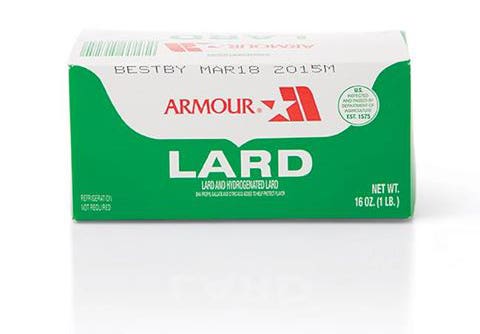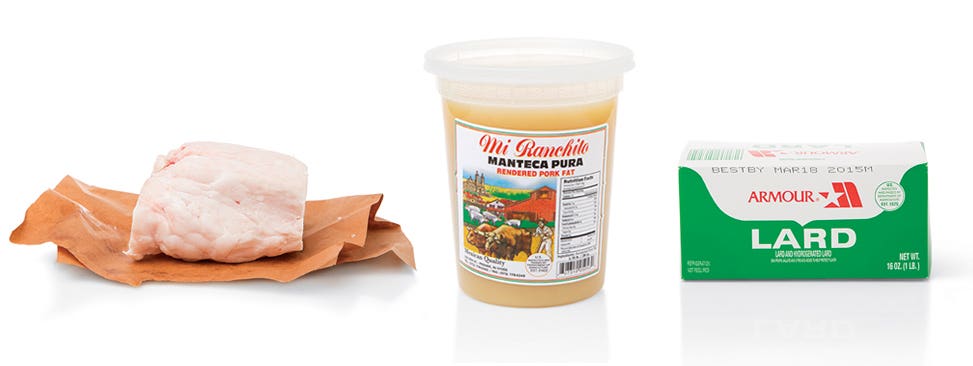
Greased Lightning

When I learned that Hungarian home cooks kept jars of zsèr—a blend of rendered bacon fat and minced cracklings—by their stoves, I knew the SAVEUR test kitchen was in for a good time. Though modern cooks are often turned off by the idea of lard, rendered pork fat improves all sorts of foods if given a chance, and the soft, flaky texture it lends pastries is unbeatable. Lard is a traditional cooking fat in many cultures, so there are plenty of variations, each with different strengths in the kitchen. Here's a guide to the most common types.
Manteca Pura: This caramel-colored Mexican-style lard, made by rendering pork fat, lends smoky depth to everything it touches. It's great for frying eggs, sautéing greens, or cooking any dishes that call for quick pan-frying. Mixed with flour, paprika, and sour cream, it adds a meaty boost to Hungarian bean and ham soup.
Armour Lard: The pork fat most commonly found in U.S. supermarkets is pearly white and shelf-stable with a mild flavor. It has a high smoke point of around 400 degrees that makes the hydrogenated block well-suited for deep-frying the Hungarian braised and fried pork spareribs.
Leaf Lard: This delicate, neutral-tasting fat from around the pig's kidneys is especially prized in the pastry kitchen, where it yields tender crusts. It's our top pick when baking fruit pies and beef empanadas.
Keep Reading
Continue to Next Story










